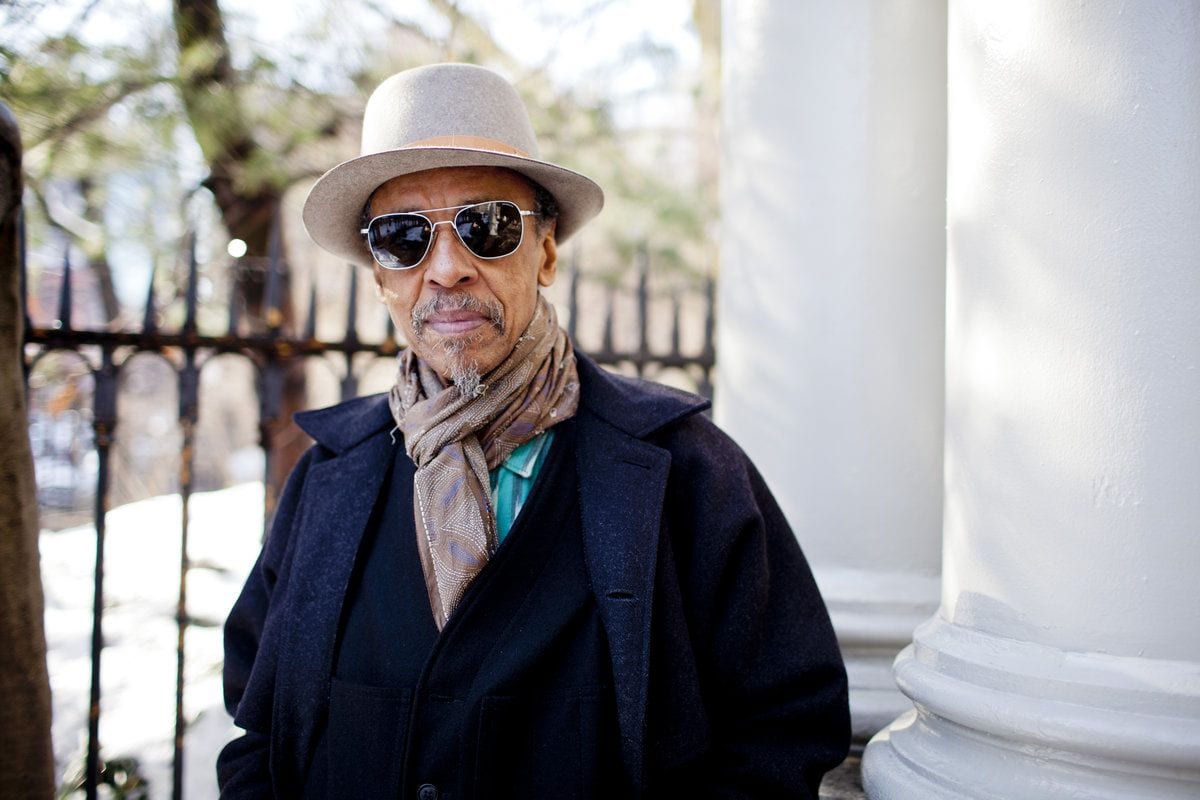

When Henry Threadgill spikes a new release upon us, the chances are that it’s going to end up on some year-end best-of lists. You may dismiss this as favoritism if you like, since some legendary acts do end up taking over these coveted spots just by releasing any something — anything, really. Threadgill, on the other hand, always delivers. Ever since his return to recording for the Pi label in 2009, the iconic saxophonist/flautist/composer has been supplying the modern jazz world with some astonishingly consistent material, culminating in the formation of a new band — Ensemble Double Up.
For 2018, Henry Threadgill not only takes Ensemble Double Up back into the studio to record, but he has also formed a new 15-piece band named 14 or 15 Kestra: Agg to record a different album altogether. The results are Double Up, Plays Double Up Plus and Dirt…and More Dirt respectively. Fans of the Pulitzer-winning composer now have 86 minutes of new music into which to dive. That isn’t just good for jazz; it’s good news for anyone who has doubted our culture’s ability to produce new original works injected with a heart and a brain of its own.
The personnel for Double Up, Plays Double Up Plus holds over from the Butch Morris tribute Old Locks and Irregular Verbs with one exception — pianist David Bryant has replaced Jason Moran. Threadgill sidelines himself to composing and conducting, letting Curtis Robert Macdonald and Roman Filiú handle the alto sax parts. Luis Perdomo and David Virelles somehow manage to bolster Bryant with two more pianos (!!!) as Christopher Hoffman saws the cello. The rhythm section consists of tubist Jose Davila and drummer Craig Weinrib.
At more than 22 minutes in length, opener “Game Is Up” occupies close to 50% of the record’s space. What exactly, you may ask, is going on during those 22 minutes? For one thing, Threadgill devotees will need to bear in mind that this is not a Zooid release. You will not hear Threadgill’s sax or flute melodically sparring with Liberty Ellman’s guitar. In its place you will hear lots of piano — there are three of them and a harmonium, after all — and all of the 12-tone jumping that a Threadgill composition brings to them. Be they piano solos or radically composed figures, you will never get an ostinato out of the deal. Weinrib spends a great deal of time sweeping the floor with different percussion techniques as well as using the tap drums.
From the sound of it, Ensemble Double Up is less concerned with making the material swing as it is in making it sing in its own odd and somehow compelling way. Through the compositions “Clear and Distinct from the Other A”, “Clear and Distinct From the Other B”, and the more plainly titled “Clear and Distinct”, rubato moments abound, using god-only-knows-what as an anchor for the music. To play this freely yet stay together can’t be that simple.
For Dirt…and More Dirt, the 12-tone formula finds a way to groove. Everyone from Ensemble Double Up is involved in 14 or 15 Kestra: Agg with the exception of Luis Perdomo. They are joined by guitarist and producer Liberty Ellman, trombonists Jacob Garchik and Ben Gerstein, trumpeters Jonathan Finlayson and Stephanie Richards, bassist Thomas Morgan, drummer Elliott Humberto Kavee, and Henry Threadgill himself on alto sax, flute, and bass flute. In the case of the pianos and drums, Bryant and Kavee are panned to the left side of the mix while Virelles and Weinrib sit on the right.
Dirt is made up of two miniature suites, dully named “Dirt” and “And More Dirt”. A couple of movements stretch beyond the eight-minute mark. Another two of them don’t even make it to the one-minute mark. Since Threadgill is allowing himself to play on this disc, his sharp, staccato attack gives the music’s syncopation an extra punch that Ensemble Double Up did not have and most likely did not require (they don’t give the Pulitzer to just anybody). Having two percussionists somehow doesn’t kill the groove with clutter. And since this is the shorter album of the two, the listener gets the impression that 14 or 15 Kestra: Agg are quicker to sharpen their points.
Ensemble Double Up had nearly 23 minutes to explore their space and possibilities inside of just one song. The leash is shorter on Dirt and it shows. Even the first movement, clocking in at eight minutes, shows a great deal of drive and purpose. The “And More Dirt” suite, which spans only 12 minutes, begins with a movement with even more nervous energy. Unlike Double Up Plus, the piano solos of Dirt are highly rhythmic though no less atonal in their approach.
If Henry Threadgill isn’t going through a late-career renaissance, then I guess I don’t know what a late-career renaissance looks like. At 74 years of age, he remains his own man. He stopped copying anyone else long, long ago, and few people dare try to copy him now. Double Up, Plays Double Up Plus and Dirt…and More Dirt, two exceptional recordings by anyone’s standards, are just recent signposts for a long career that would never be mistaken for being compromised.


![Call for Papers: All Things Reconsidered [MUSIC] May-August 2024](https://www.popmatters.com/wp-content/uploads/2024/04/all-things-reconsidered-call-music-may-2024-720x380.jpg)



